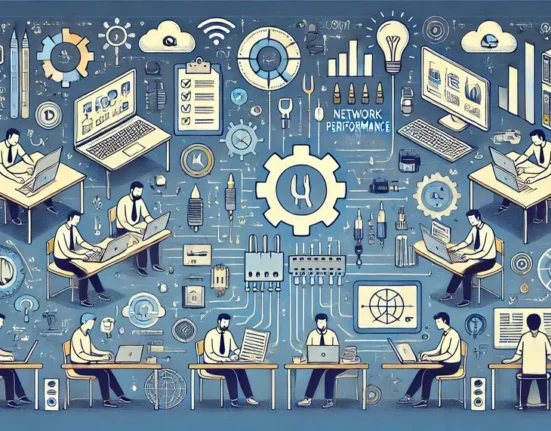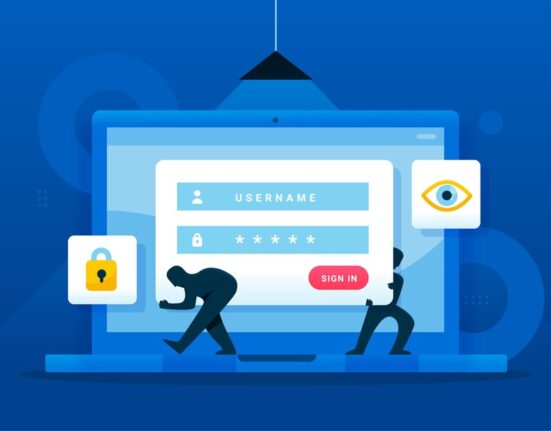Passed are the days when the workplace was solely a physical space employee utilised during regular office hours. Today’s always-connected, instant-access situation has shroud the lines between the physical office and the place where work happens. As the difference between professional and personal life ends and the workplace becomes genuinely digital, employees interact and collaborate in unique ways. To enable knowledge sharing across the business, they want to forge productive business relationships beyond natural workgroups.
If you want to accurately reflect your staff’s changing work experience, leading organizations have begun to implement an entirely new concept of the working environment – the digitally savvy workforce. Just by integrating technologies that employees use from email, instant messaging, social media tools, HR applications, virtual meeting tools, etc. Digital platform breaks down barriers, positioning you to transform your employee experience to foster efficiency, innovation and growth. But the key to success lies in the successful execution of a digital workplace strategy that is capable of driving actual cultural change.

Digital transformation at workforce
While the workplace began transforming as far back as the agricultural and industrial revolutions, the global proliferation of information technology forever changed how employees connect, collaborate and communicate. This change accelerated over the last 30 years due to the emergence of three fundamental trends:
- Ageing workforce
The baby boomers continue to retire, and they are taking fundamental knowledge with them, increasing the need to capture their knowledge
- Information overload
Even with advanced technology, information is still growing exponentially, and employees still can’t find their desires or needs.
- The need for speed
With the sudden stride of today’s work environments, employees continuously need to work faster and collaborate more productively to get their jobs done.
Now the workforce demographics continue to shift, and employers struggle to meet the varied needs of a multigenerational workforce. As the use of mobile or the internet rises high, the pace of change continues to accelerate. Further, these changes are exacerbated by the continuous demand to increase productivity and cost cuts, making it difficult for the employer to meet market expectations. Hence together, these trends are reshaping the workforce environment.
What is the digital workforce?
All the digital technologies and services used by people to get work in today’s workplace – both the one that has already been used and ones to be implemented- are called digital workplaces—ranging from HR application to emails, instant messaging, enterprise social media tools, and enterprise social media and virtual meeting tools.
The digital workforce can :
- Support change in working styles enabling employees to work more transparently and best use of social networks.
- Unify offline and online communication to connect with employees anytime, anywhere to access tools or company information by their mobile device.
- By providing the employees user experience they have outside the firewall, we can focus on employee experience. They can be provided with choice, flexibility and personalization.
- A virtual work environment that allows employees to stay connected in distributed and virtualized work locations and balance customer privacy and operational risk.
- By providing the employees with the right tool at the right time, you can minimize the expense and increase productivity.
- You have to win the war of talent by offering a progressive and innovative environment for top candidates.
- If you wish to get a solution for integrating information and services in one standard user interface – use the digital workplace as a portal.
Combined data can be used through interfaces in different applications. Users can merge existing data and build new applications based on it. The digital workplace leadership will equip staff with the right IT tools, platforms, and services, allowing users to work and cooperate anywhere, anytime with fit-for-purpose safety and optimizing their work expertise and productivity. It will be adaptive and resilient to consolidate different user types, new behaviors, and new technologies.
How will the digital workforce benefit the business operations?
The key to the benefit of digital workplaces lies in a practical implementation of a digital workplace policy. The first step in this revolutionizing policy is a cultural change aided by learning measures.
Digital workplace strategy can be understood as the dynamic alignment of an organization’s work patterns within the digital work environment to enable peak performance and reduce costs. As each workplace strategy, a digital one supports fulfilling business objectives such as reducing property costs, improving business performance, incorporating two or more organizations, and relocating or merging settled buildings.
Following are the reasons why you should have a digital-savvy workforce :.
Why do you need a digital workplace strategy?
If the risks of indolence are not sufficient motivators, the benefits of embracing digital workplace make a engrossing business case. Consider the gains in the following:
- Talent attraction:
64% of employees opt for a lower-paying job if they could work away from the office.
- Employee productivity:
The organizations with strong online social networks are 7% more likely to be productive than those who do have it.
- Employee satisfaction:
An organization that installed social media tools internally found a medial 20 percent rise in employee satisfaction.
- Employee retention:
When employee engagement progresses, there is a comparable increase in employee possession by up to 87%.
- Communication tools:
Information workers choose newer communication tools, particularly instant messaging, over standard email or team workspaces.
More businesses are committing IT budgets to reinforcing digital workplace strategies that promise to achieve measurable returns given these advantages. This trend is only set to accelerate as employees increasingly choose to forge productive business relationships beyond natural workgroups to enhance knowledge sharing across the organization. To brace these results, you need to allocate employees with the tools they require to cooperate, communicate and connect. You need to synchronize your technology groups and investments to avoid the traps of siloed execution and diversified ownership. It would be best if you adopted clear roadmaps to ensure your digital workplace delivers measurable business value while mitigating risks and adhering to compliance requirements.
The business case for the digital workforce is more apparent than ever. Moreover, you already have plans in place to make it possible. Now it’s time to take steps and complete a digital workforce in your business and get the outcomes that had never been accomplished.






